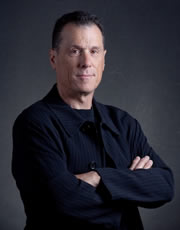 I am in New York for a few days to attend a film screening and speak on a panel and have plugged into the generative energy of the city as much as possible. I am always struck, on these short intense trips, by the juxtaposition of seemingly unrelated and random events, images and experiences that accrue in a short period of time. Artists have long pushed institutions toward their own particular light and many of the most venerable such institutions in New York as elsewhere, had their generative beginnings rooted in the agendas of manifesto driven and boundary breaking artists’ groups.
I am in New York for a few days to attend a film screening and speak on a panel and have plugged into the generative energy of the city as much as possible. I am always struck, on these short intense trips, by the juxtaposition of seemingly unrelated and random events, images and experiences that accrue in a short period of time. Artists have long pushed institutions toward their own particular light and many of the most venerable such institutions in New York as elsewhere, had their generative beginnings rooted in the agendas of manifesto driven and boundary breaking artists’ groups.

Take Me (I’m Yours) installation view, September 16, 2016 – February 5, 2017
This morning I rushed to the Jewish Museum for the last day of Take Me, (I’m Yours), an exhibition that takes as its starting point, an iconic show in 1995 at the Serpentine Gallery in London. Originally conceived collaboratively by the curator Hans Ulrich Obrist and the artist Christian Boltanski, the organizing principle was the “histories and ideologies related to possession, from the anarchist idea that “ownership is theft” to the post-1960s dematerialization of the object in conceptual art.” This iteration spoke to notions of democratic space, inviting visitors to “take ownership of artworks”, thus subverting the politics of consumerism and value while generously encouraging people to take the artworks home with them. Artists such as Boltanski, Yoko Ono, Allison Knowles, Felix Gonzalez-Torres, Rirkrit Tiravanija and others were represented by multiples that had a give-away component to them, thus making it possible for museum-goers to “own” a piece of a piece, a kind of sharing economy of the larger whole of the artwork; the art of generosity.
As my trips to New York are usually full of interdisciplinary-genre-hopping, mash-ups of contemporary culture, in the afternoon I attended a program of films and presentations at Lincoln Center. The short opening film was based on the Surrealist’s collaborative, chance-based parlor game Exquisite Corpse (Cadavre Exquis). In the game, each participating artist would draw an image on a sheet of paper, fold the paper to hide their contribution, and pass it on to the next player. The film that was screened used the same strategy to create a dance that was built by a group of performers each limited to eight seconds of material and edited together into a progressive work of choreography resulting in a shared authorship.

Judson Dance Theatre participants
The subsequent screening included work from the early 1990’s by the choreographer and director David Gordon who was a member of the legendary composition class taught by the musician Robert Dunn in New York in the 1960’s. The class was the meeting point for a diverse group of artists, writers and performers that led to the formation of the seminal Judson Church Group. Gordon recounted how, at the end of the Douglas Dunn workshop, the participants all submitted their work for consideration to a Modern Dance showcase at the 92nd St. Y and all of them were rejected. In the tradition of the Salon des Refusés, they decided to find a place where they might show their work to one another and were offered the basement of the Judson Memorial Church in Greenwich Village, and the subsequent event in July 1962 which featured the work of the Dunn workshop participants is regarded as the beginning of the postmodernist Judson Dance Theater, one of the most important interdisciplinary work groups in the post-war era.

Lady Gaga, 2017 Superbowl
And finally, I arrived back at my hotel to in time to see Lady Gaga’s halftime performance, which appropriated and deconstructed both nationalism and religion then wove identity based, gender-fluid pop music into the mix. Gaga channeled hopefulness into the otherwise competitive and violent spectacle of the Super Bowl, while appropriating its underlying themes and its extreme visuality. Taken as a piece, my esthetic day-trip was both a post-modern pastiche and an illuminating interdisciplinary primer.
Douglas Rosenberg
